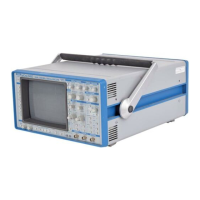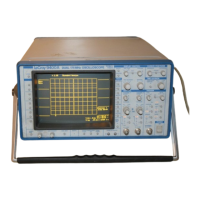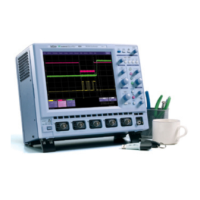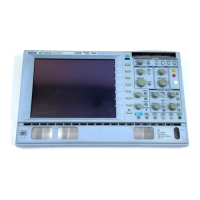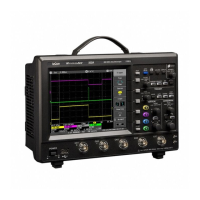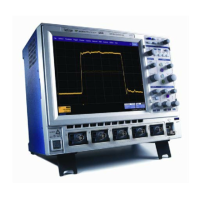7–2
Timebase Modes and Setup
When using slow timebases, sample-rate decreases and very
short events such as glitches can be missed if they occur
between two samples. To prevent this, a special circuitry called
the Peak Detect system can be switched on (see “Channel Use”
menu, page 7–5) to capture the signal envelope with a
resolution of 2.5 ns. This is done without destroying the
underlying, simultaneously captured data, on which a wide range
of advanced processing can be performed.
RIS is an acquisition technique that allows effective sampling
rates higher than the maximum single-shot sampling rate. It is
used on repetitive waveforms with a stable trigger.
The maximum effective sampling rate of 10 GS/s can be
achieved by acquiring 100 single-shot acquisitions, or bins, at
100 MS/s using the 9304C, 9310C, 9314C Series oscilloscopes;
20 bins at 500 MS/s when using the other models. These bins
are positioned approximately 0.1 ns apart. The process of
acquiring this number of bins and satisfying the time constraint
is random. The relative time between ADC sampling instants
and the event trigger provides the necessary variation,
measured by the timebase to 10 ps accuracy.
Peak Detect
NOT AVAILABLE WITH
9304C, 9310C, 9314C
SERIES
RIS: Random
Interleaved Sampling
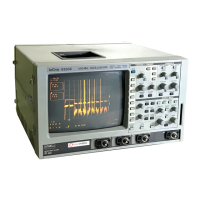
